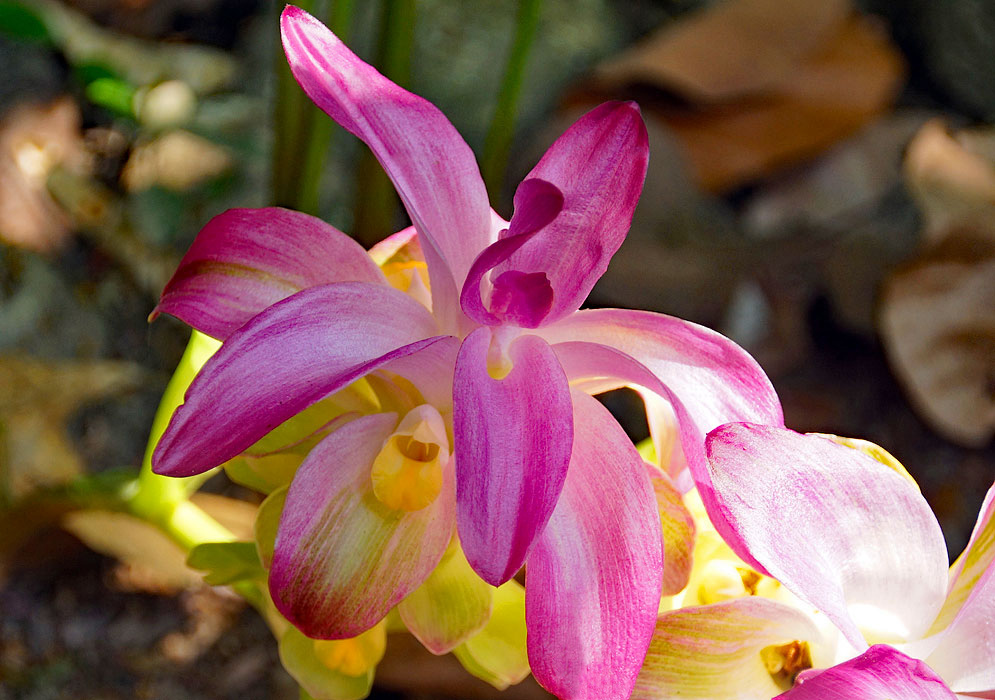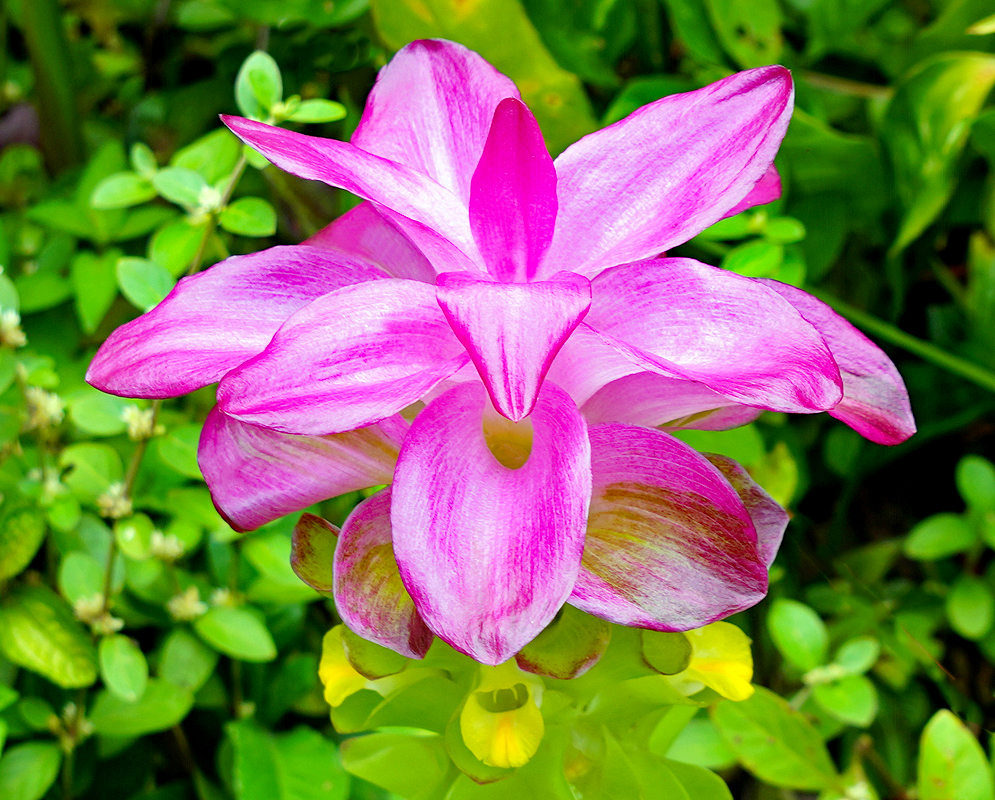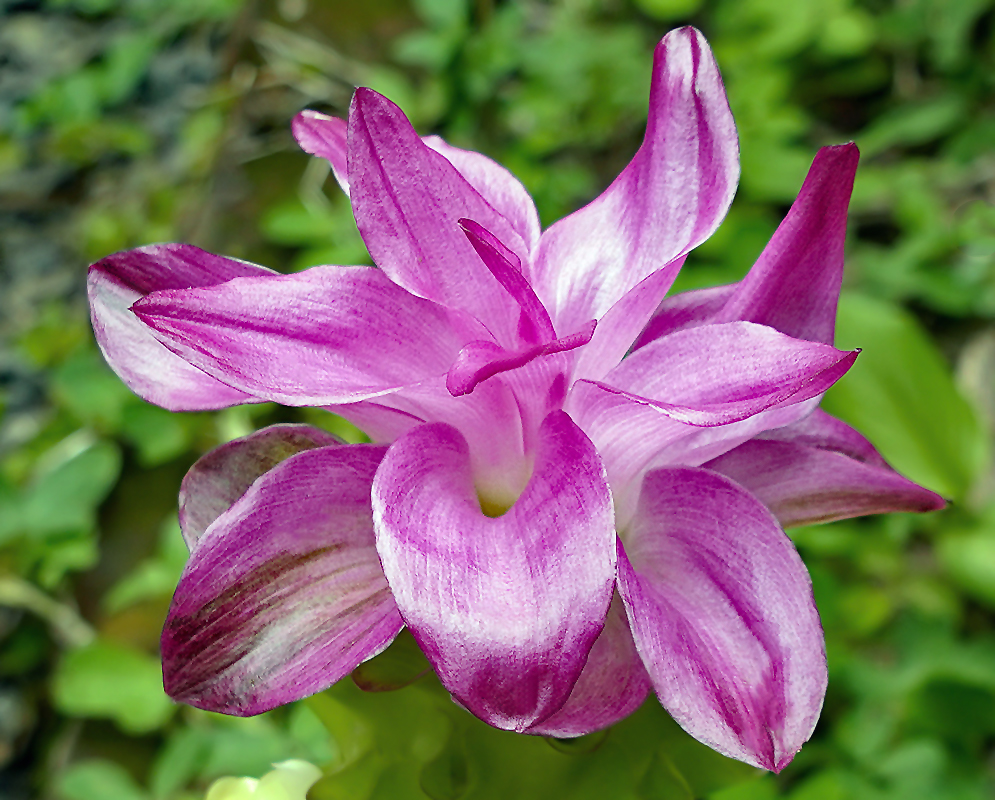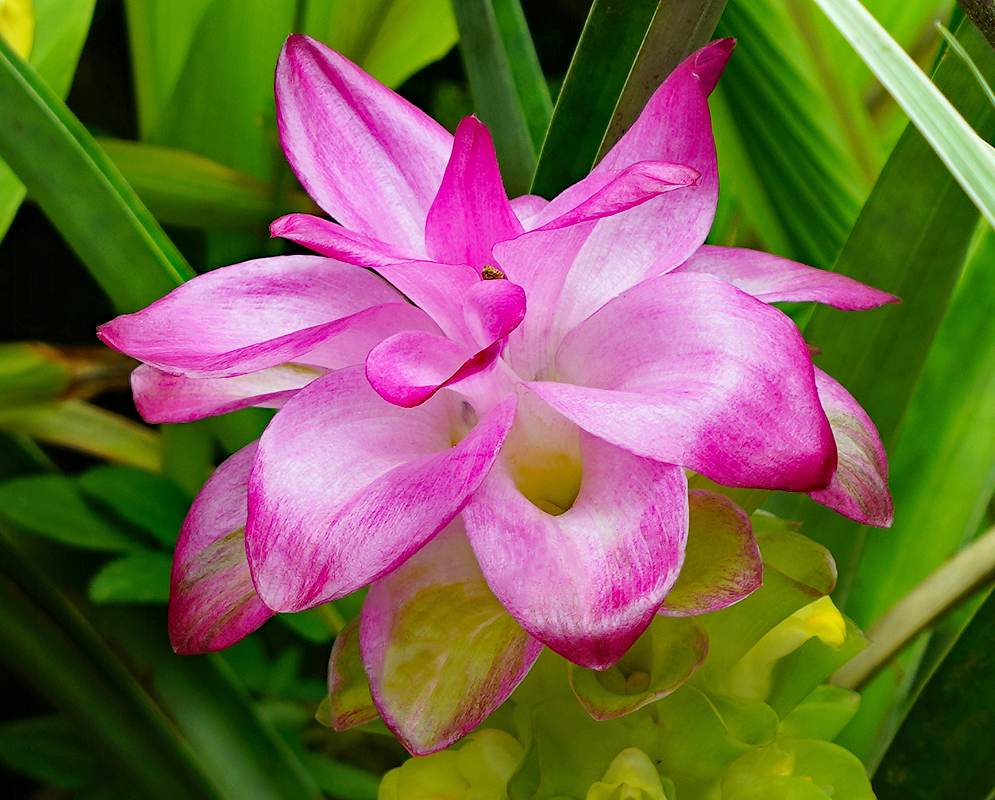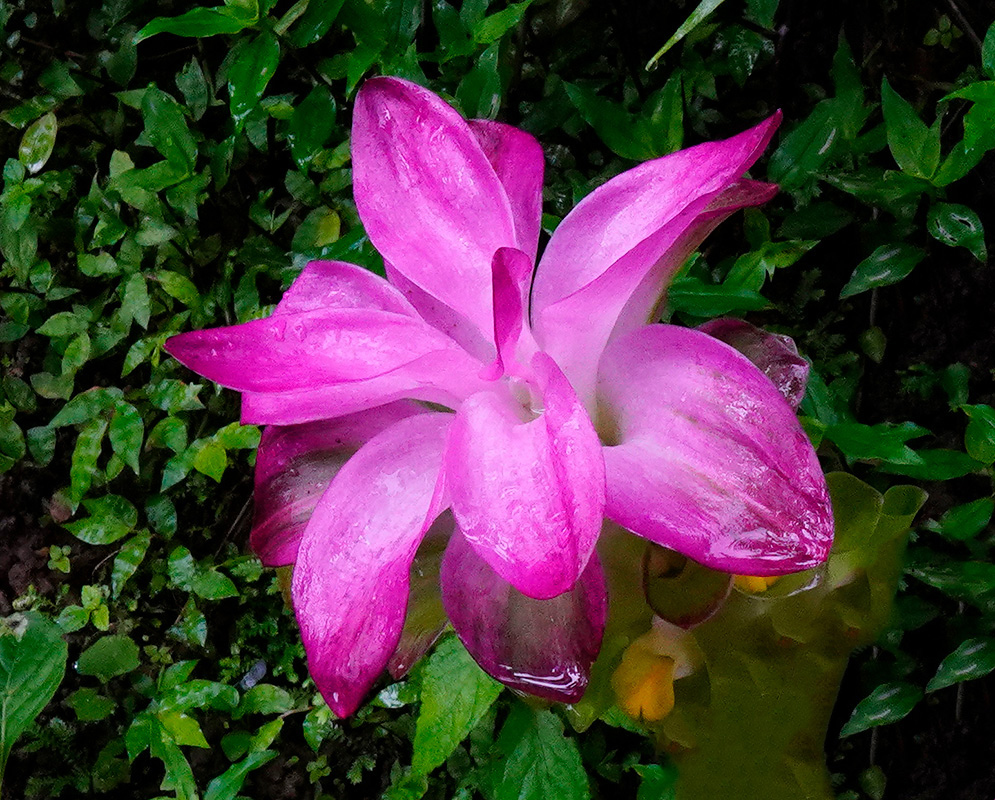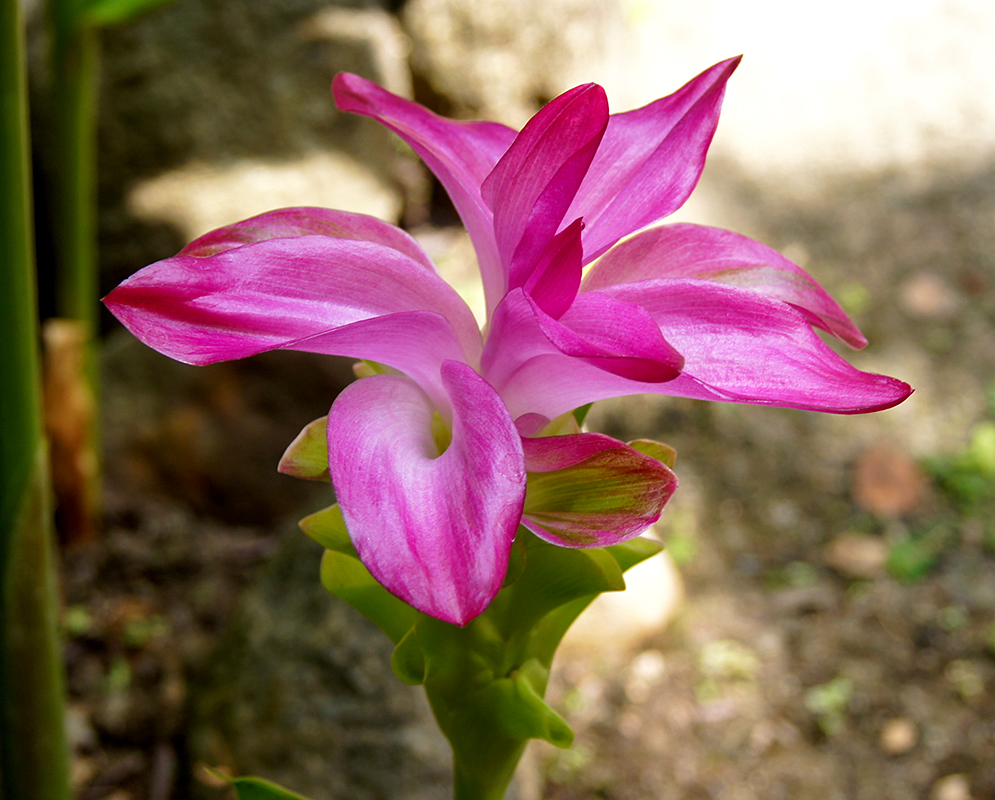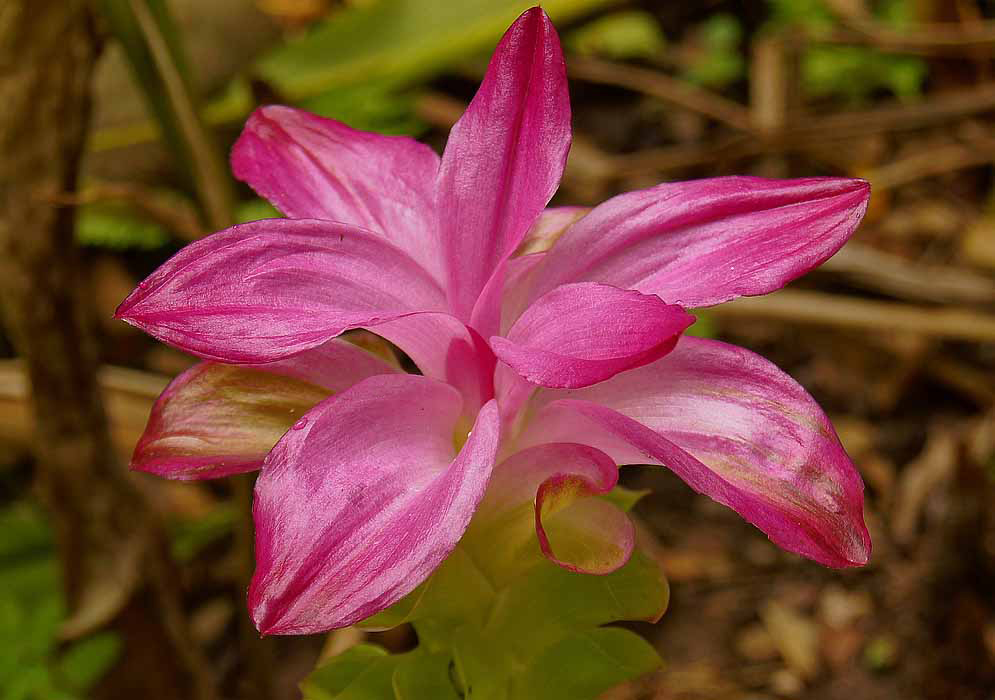This post has 11 Simple Fields-fields attached. Show fields.
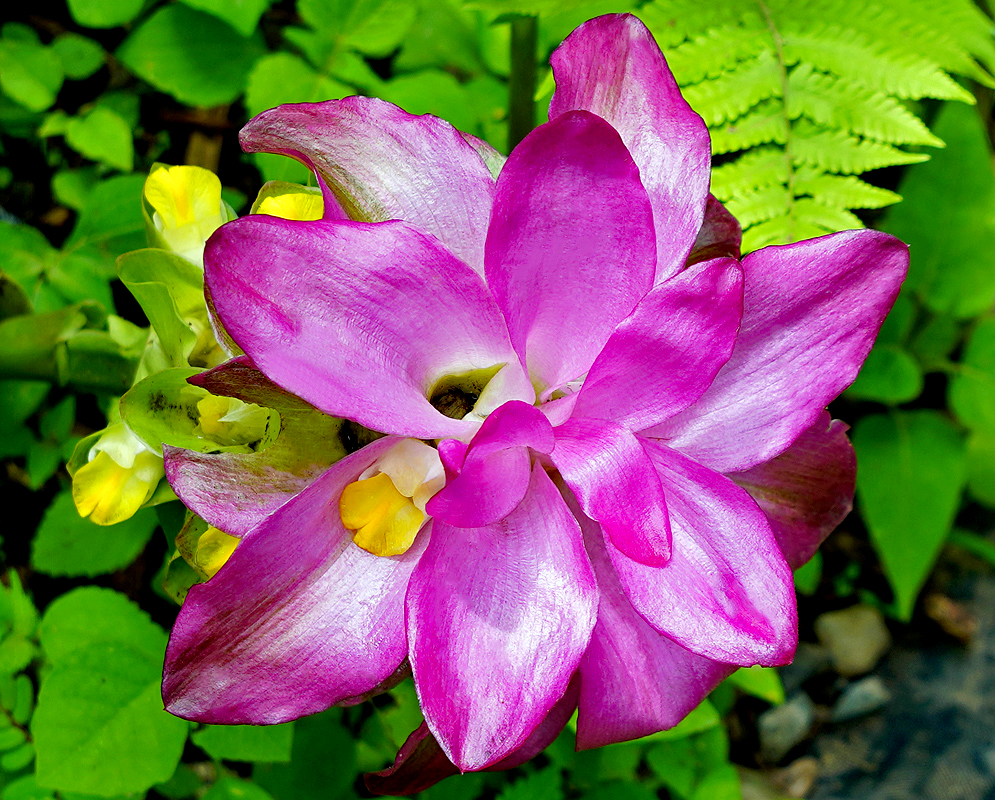
A plant native to India and Indonesia thriving in the tropical and subtropical environments. The plant has a perennial growth habit and develops from rhizomes, similar to its more well-known relative, turmeric. White Turmeric is highly regarded for its medicinal properties, with the rhizomes being used traditionally in Ayurvedic medicine to treat various ailments. The rhizomes are believed to have anti-inflammatory and antioxidant properties, and they have been used to aid in digestion, reduce pain, and promote overall health. Additionally, the plant is known to have a fragrant aroma, with the rhizomes and flowers emitting a fresh and camphorous scent. In terms of edibility, the rhizomes of White Turmeric can be consumed, and they are known to have a bitter and pungent taste. However, they are not commonly eaten in the U.S. and are more traditionally used in culinary dishes in Southeast Asia. An essential oil is produced from the dried rhizomes which is also edible. Photographed in the Quindio, Colombia.




